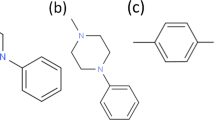Abstract
Characteristics of dipeptide transport in pig jejunum were investigated in vitro by applying the Ussing-chamber technique and mucosal uptake studies. Addition of both glycyl-l-glutamine and glycyl-l-sarcosine (20 mmol · l−1) to the mucosal buffer solution significantly increased the short-circuit current by 2.60 ± 0.15 and 1.57 ± 0.20 μeq · cm−2 · h−1, respectively. Concentration-dependent changes in short-circuit current followed Michaelis-Menten kinetics with similar affinity constants for both dipeptides. From unidirectional flux rates for radiolabelled glycyl-l-sarcosine, a net flux rate for glycyl-l-sarcosine of 49.8 ± 6.7 nmol · cm−2 · h−1 was calculated. In mucosal uptake experiments, the apical influx of 14C-labelled glycyl-l-sarcosine into isolated porcine mucosa was pH dependent and significantly inhibited by glycyl-l-glutamine. Moreover, RT-PCR studies with primers derived from rabbit PepT1 identified two PCR fragments of identical size to rabbit PepT1 from pig intestinal mRNA preparations. In conclusion, our studies revealed key features of mammalian intestinal peptide transporters and give evidence for a PepT1-like transporter in the pig jejunum that could significantly contribute to the overall amino acid absorption from the gut.
Similar content being viewed by others
Author information
Authors and Affiliations
Additional information
Accepted: 30 June 1999
Rights and permissions
About this article
Cite this article
Winckler, C., Breves, G., Boll, M. et al. Characteristics of dipeptide transport in pig jejunum in vitro. J Comp Physiol B 169, 495–500 (1999). https://doi.org/10.1007/s003600050247
Issue Date:
DOI: https://doi.org/10.1007/s003600050247




